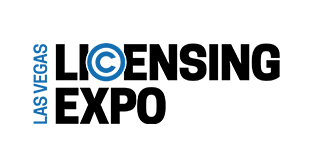Google is the Most Valuable U.S. Brand
GLOBAL–Google has once claimed the title of “most valuable U.S. brand” in the 2018 BrandZ Top 100 Most Valuable U.S. Brands report, compiled by WPP and Millward Brown.
April 6, 2018

Apple, Amazon, Microsoft, Facebook VISA and A&T trail Google as the most valuable brands among U.S. consumers
.jpg?width=500&auto=webp&quality=80&disable=upscale) GLOBAL–Google has claimed the title of “most valuable U.S. brand” in the 2018 BrandZ Top 100 Most Valuable U.S. Brands report, compiled by WPP and Millward Brown.
GLOBAL–Google has claimed the title of “most valuable U.S. brand” in the 2018 BrandZ Top 100 Most Valuable U.S. Brands report, compiled by WPP and Millward Brown.
This is the first year BrandZ has ranked U.S. brands; however, many of these brands have been included as part of the global top 100 most valuable brands, which was released this summer and gives insight into how some of these companies have fared over time.
Google’s current brand value checks in at $286 billion, while Apple is close behind at $279 billion. According to the report, the Google/Apple divergence is likely due to the vast amount of time their customers spend with them. The two brands live on handsets, PCs and all manner of digital devices, performing hundreds of tasks daily for people across the globe.
Trailing Google and Apple, the other top companies on the Top 100 Most Valuable U.S. Brands report include Amazon, Microsoft, Facebook, Visa, AT&T, McDonald’s, IBM and Marlboro.
The total brand value of the BrandZ Top 100 Most Valuable U.S. Brands 2018 is $3.2 trillion. The top 10 alone accounts for $1.6 trillion, or half of the total value.
Although Google is the most valuable brand in the U.S., Amazon has been the fastest grower in brand value since 2006. It also ranks as the second-highest among American brands in brand experience (FedEx is first), showing how important a customer’s interaction with brand is in building a relationship.
“We are excited to be bringing the BrandZ study to the U.S.. America today is home to some of the world’s strongest and most universally recognized brands. These include old favorites, like Disney and Coca-Cola, and rapidly emerging powerhouses, like Amazon and Facebook,” says David Roth, chief executive officer, The Store WPP, EMEA & Asia, and chairman, BAV Group. “The U.S. economy has been forecast to grow 2.1 percent in 2018. While this is decidedly sluggish, America remains a vibrant hotbed of innovation and creativity. We see this in the top five most valuable brands–Google, Apple, Amazon, Microsoft and Facebook–a group with such global reach and influence that we’ve dubbed them the Fearsome Five.”
Highlights and key findings from this year’s BrandZ Top 100 U.S. Brands study include:
Fifty-four brands from the U.S. were also included in the BrandZ Top 100 Most Valuable Global brands ranking.
Surprisingly, technology brands have not dominated the charts for fastest growth; instead, half of the top 10 fastest risers were fast food brands–including Domino’s, Burger King, Starbucks, McDonald��’s and Taco Bell. However, many of these brands are growing due to their adoption of technology to drive convenience.
Strong brands continue to get stronger. The study found that brand contribution, or the amount of value directly attributable to the brand itself, is a key predictor in brand growth. For example, brands that rank highly on brand contribution grew 307 percent on average, while brands that rank in the bottom on this measure have lost 10 percent in value in the past 12 years.
Brands that have asset-light strategies typically have both higher growth in brand value and higher brand contribution scores. Asset-free living also allows brands to explore product development and other types of diversification. For example, Disney has expanded into theme parks, cruise ships and products throughout the years, while Microsoft has diversified into devices and passed its learnings onto third-party manufactures.
AI promises to be a transformative force for brands, allowing them to get a 360-degree view of their customers and insights into their mindsets. According to the study, brands that want to excel in measures like brand experience will increasingly need AI and machine learning to draw a more precise picture of their consumers.
You May Also Like






